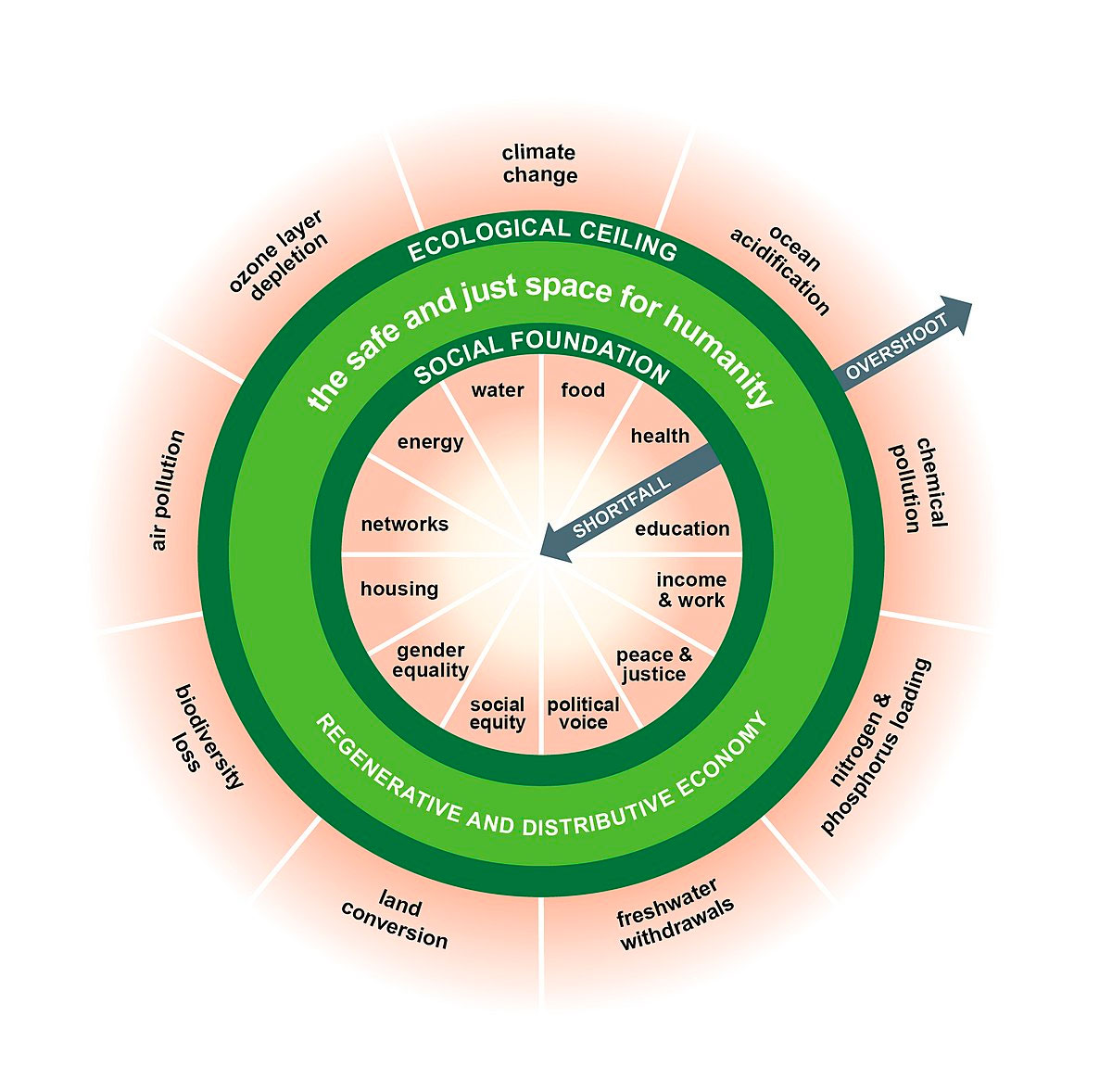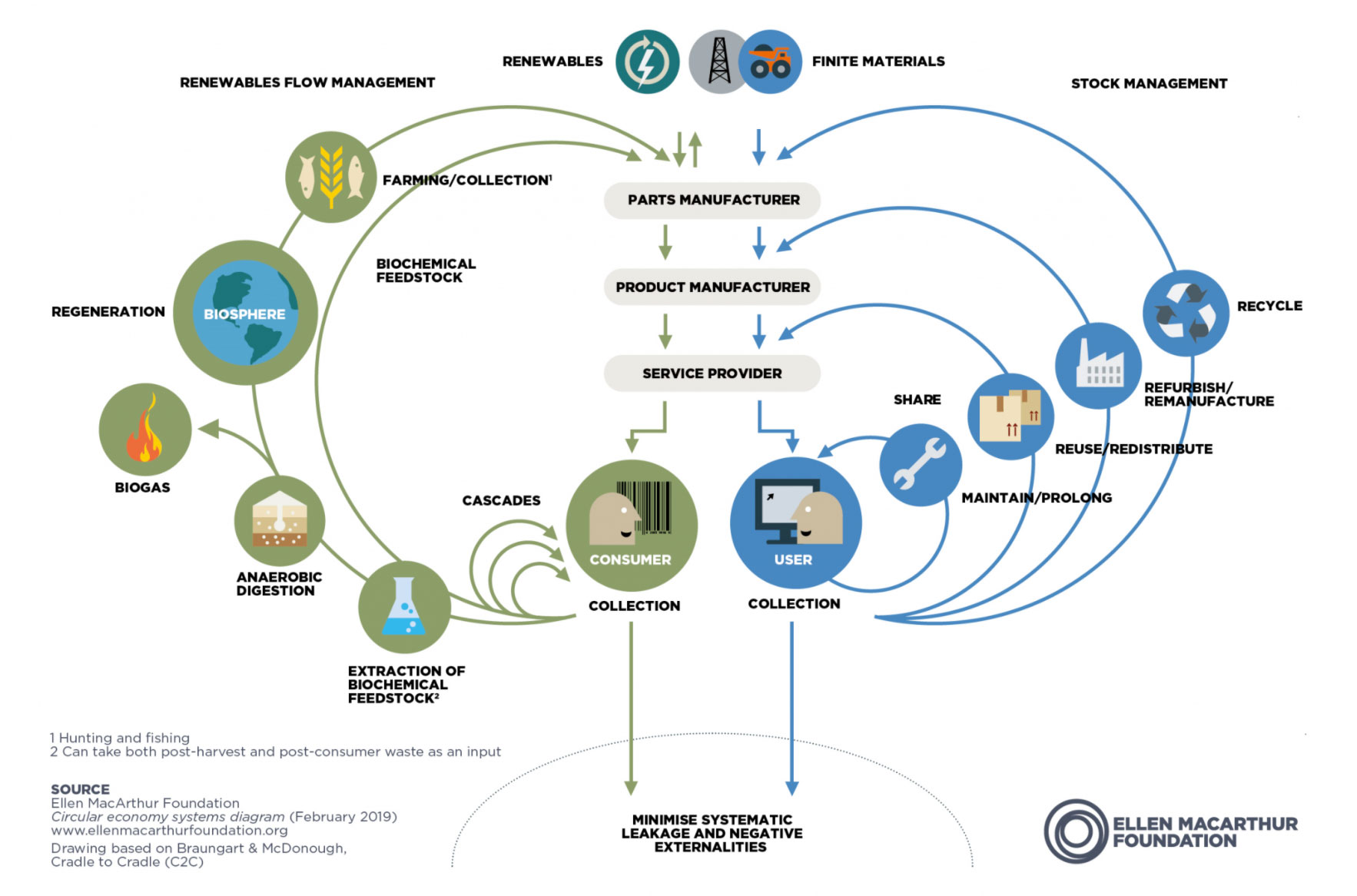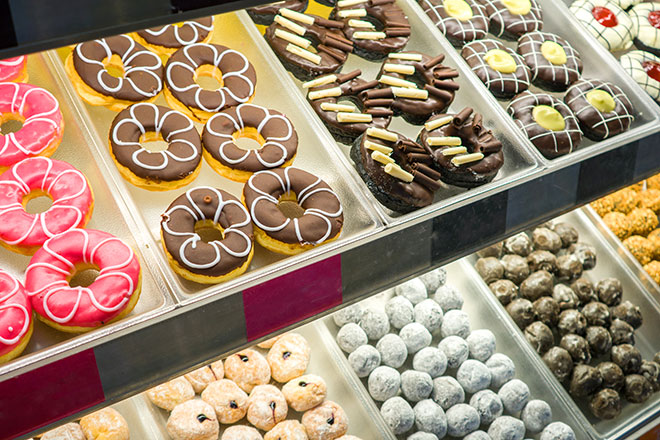Looking around our blog you’ll note several references to the Circular Economy and in this article, we’re taking a more considered look at how this model is actually impacting on contemporary business. We’re also going to have a look at the Doughnut Model of economics which is now being taught to future economists across the globe. As you will see it offers a very different way of measuring success than our current Linear Economy. It’s probably helpful to start with some basic definitions of these terms for anyone that has yet to come across them.
The Linear Economy is our current model for growth which is based on a take-make-dispose approach of extracting natural resources, processing them in a way that maximises profit and then disposing of the finished goods as waste products.
A Circular Economy is an approach to economic development that is designed to benefit business, society, and the environment in a more balanced and sustainable way. The model aims to separate economic growth from the direct consumption of finite natural resources. Ensuring these resources are used in a way that means they can be easily recycled in the future is a cornerstone of what is called regenerative design. Three key circular principles are designing out waste and pollution, keeping products and natural materials in use and regenerating natural systems.
Doughnut Economics is a more radical model that’s starting to gain significant traction around the world. It overtly redefines successful economic activity as balancing protection of the key ecological systems of the planet with achieving social wellbeing and quality of life for everybody living on it.
- The relationship between circles and doughnuts
So other than both being round and one of them being a geometric shape and the other a tasty treat with a cup of tea what are the similarities and differences in these approaches to achieving global sustainability? The answer lies in one of the few maths lessons most of us actually remember from school – the good old Venn diagram. It’s hard to separate these two concepts as they overlap in so many ways. If you look at the Doughnut Model in any detail it can seem to represent a set of overwhelming and unattainable goals. The simplest explanation is that adopting a more Circular Economic model now will act as a pragmatic stepping-stone for the world to reach the Doughnut Model in the future. The Circular Economy fits into this vision, by enhancing resource efficiency and promoting business models that support the global flow of recycled resources.
- The Doughnut Model
So what exactly are modern economists aiming for in terms of the Doughnut Model – named after the ring shape of the diagram most often used to explain it? The hole in the centre of the doughnut represents people that do not have access to the essential social foundations of life and the outer crust represents the planet’s ecosystems that must be protected. The space in between is the doughnut - the sweet spot where everyone has what they need to live a good life below the environmental ceiling that keeps the planet safe.

- A diagram of the circular economy
The Ellen Macarthur Foundation has a really helpful infographic that details the Circular Economy as being split between biological and technical cycles. This is a great starting point to get you thinking about what you can do differently in your business to become more circular and less linear in your day-to-day operations.

- A new measure of success
To create a sustainable world, we need to stop seeing the economy as something entirely separate from social justice and ecological wellbeing. The Linear Economy involves the extraction of raw materials for production into finished goods at a maximum profit until they’re accumulated as waste. Success is measured in terms of growth in GDP and profits created, without factoring in wealth inequality and damage to the planet. The Doughnut Model measures economic performance not on growth but on the extent to which humanity’s needs are met without compromising ecological balance.
Achieving social equality so all humans can thrive and preventing catastrophic environmental change is what will deliver this new global economy. One that is orientated to protecting ecosystems and preserving natural resources for future generations rather than creating short term profit. The pandemic offered some stark parallels; vaccinating richer countries does not protect them from the threat of COVID, unless poorer countries are also vaccinated. Should climate change escalate and become irreversible the impact on all human life will be devastating irrespective individual personal wealth.
- What difference can you make?
In conversations about sustainable practices in business, the theme of overwhelming change often leaves decision makers feeling the changes needed are just too big for small companies to achieve. Concerns are also expressed that when companies become more vocal about sustainability, they’ll find themselves under scrutiny that rather than highlighting the good things they’re doing might only expose what they’re yet to do. The truth is we can all make small changes right now and that it’s the accumulation of these over time that will deliver the bigger change needed.
TEKrefresh is by its very nature a circular business in that our whole reason for being is to extend the life of devices and by default the natural resources that were used to make them. We’re happy to share that we’ve tried to embed some of the principles of both Circular and Doughnut economics in the wider business. Whilst what we’re doing doesn’t represent sustainability perfection it’s a great step in the right direction. We’ve also noticed that the more we think about it the more opportunities we spot for increasing the part we can play.
- What TEKrefresh is doing
- We only purchase recycled packaging
- We do not purchase any plastic wrap but do recycle any that comes into the warehouse
- All new packaging that comes in through device procurement is recycled
- We’ll be adding ‘Please Recycle’ stickers to all packaging to encourage further re-use
- We work very hard to be a great place to work with fair pay and working conditions
- We are committed to achieving better mental health outcomes for our employees
- We offer staff access to mindfulness practices
- We are committed to a lifestyle business model - we work to live not live to work
- We aim to educate on better health through sharing dietary and fitness information
- We request, track and monitor happy scores across our teams
- We listen to our people
- We emphasise the importance of equality (gender, age, race and religion)
Hopefully us sharing some of our ideas might inspire some sustainability changes in your own business and we’d be very happy to talk with you about the positive impact of the changes we’ve made. Circles and doughnuts are no longer just theoretical models – the global economy is starting to witness genuine change and hopefully the tipping-point is coming into view sometime soon. TEKrefresh is proud to be playing a part in that in our own small way.
